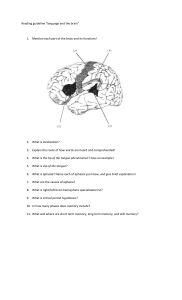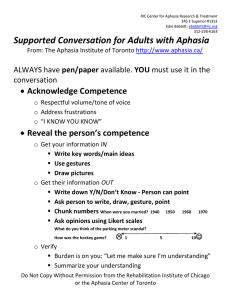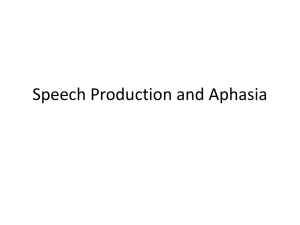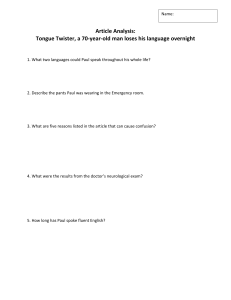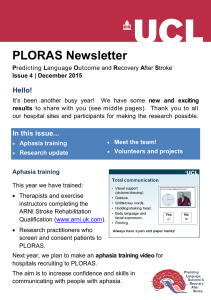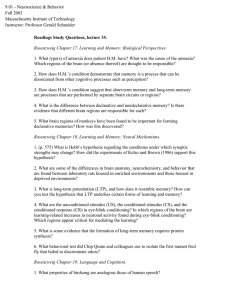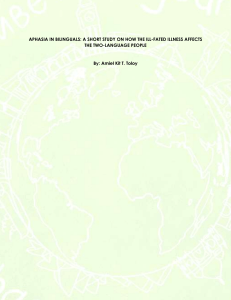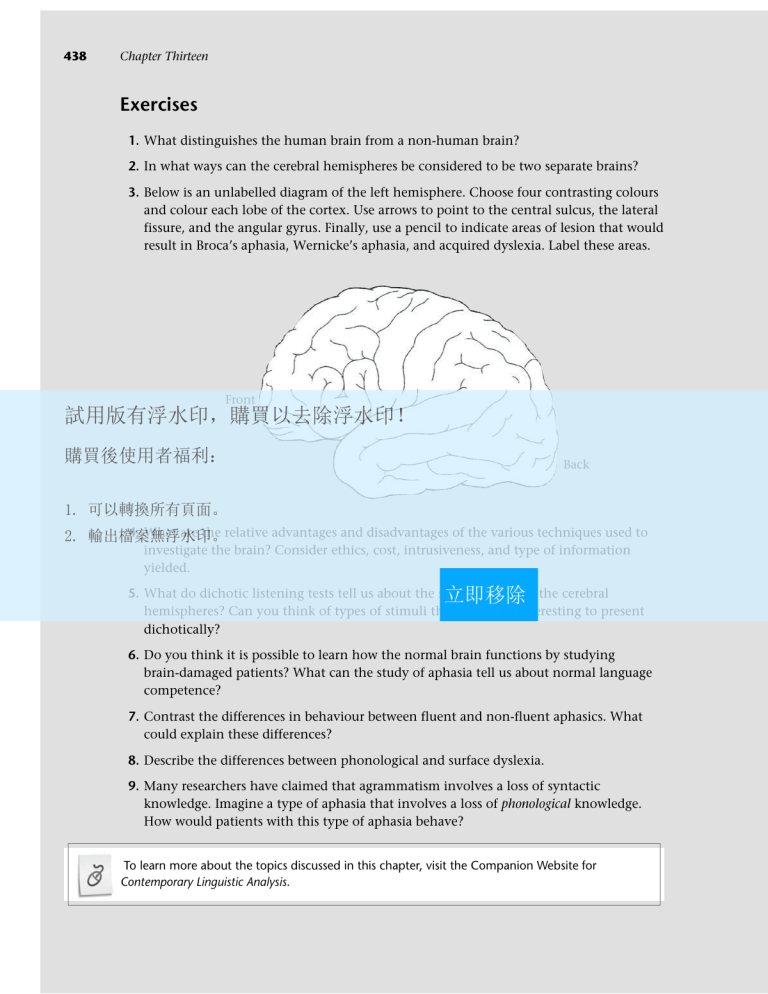
438 Chapter Thirteen Exercises 1. What distinguishes the human brain from a non-human brain? 2. In what ways can the cerebral hemispheres be considered to be two separate brains? 3. Below is an unlabelled diagram of the left hemisphere. Choose four contrasting colours and colour each lobe of the cortex. Use arrows to point to the central sulcus, the lateral fissure, and the angular gyrus. Finally, use a pencil to indicate areas of lesion that would result in Broca’s aphasia, Wernicke’s aphasia, and acquired dyslexia. Label these areas. Front 試用版有浮水印,購買以去除浮水印! 購買後使用者福利: Back 1. 可以轉換所有頁面。 4. What are the relative advantages and disadvantages of the various techniques used to 2. 輸出檔案無浮水印。 investigate the brain? Consider ethics, cost, intrusiveness, and type of information yielded. 立即移除 5. What do dichotic listening tests tell us about the specialization of the cerebral hemispheres? Can you think of types of stimuli that would be interesting to present dichotically? 6. Do you think it is possible to learn how the normal brain functions by studying brain-damaged patients? What can the study of aphasia tell us about normal language competence? 7. Contrast the differences in behaviour between fluent and non-fluent aphasics. What could explain these differences? 8. Describe the differences between phonological and surface dyslexia. 9. Many researchers have claimed that agrammatism involves a loss of syntactic knowledge. Imagine a type of aphasia that involves a loss of phonological knowledge. How would patients with this type of aphasia behave? To learn more about the topics discussed in this chapter, visit the Companion Website for Contemporary Linguistic Analysis.
